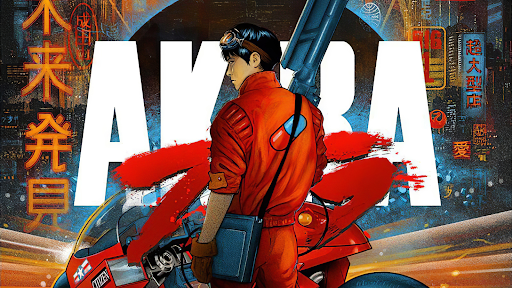In celebration of the British Film Institute’s (BFI) anime season, we at Japan Nakama are excited to bring you the latest about the incredible slew of anime classics set to screen over April and May 2022.
One of these classics and dare I say, one of the greatest anime films of all time, Ghost in the Shell (1995) is set to hit the BFI Southbank in glorious IMAX on the 25th of April. So make sure to book your tickets and keep up to date with us to ensure you don’t miss a beat when it comes to anime at the BFI.
The Ghost in the Shell
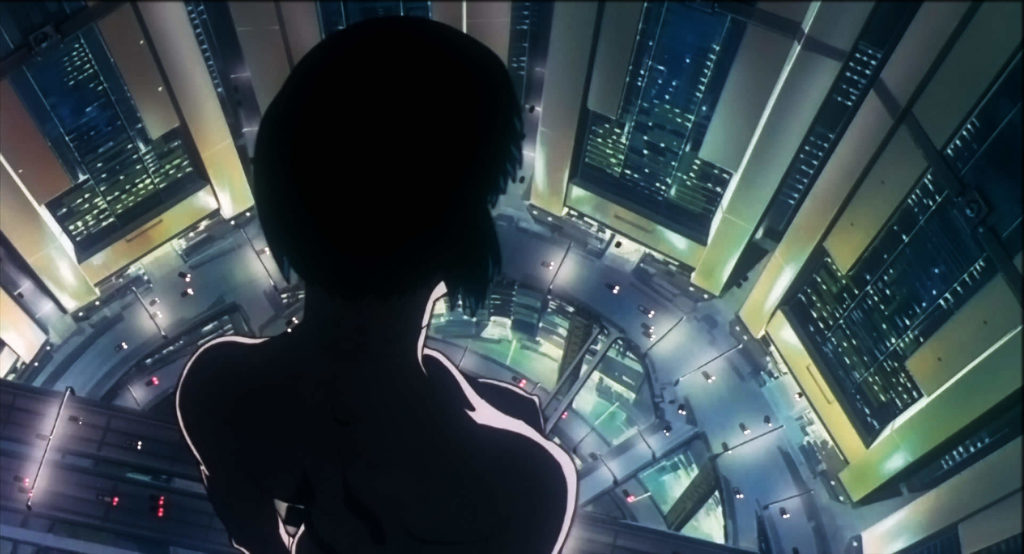
Based on the 1989 manga of (almost) the same name by Masamune Shirow, Mamoru Oshii’s Ghost in the Shell is one of the most iconic, and eerily prescient anime films in the history of the medium. Although conceived and released during the early years of computer technology, it depicts a world in which man and machine live co-dependently with one another. Corporate networks have spread throughout the Earth, connecting humans with electronic and optical communication lines, and while society has not yet been made computerised, the move towards a complete and utter digitalisation is on the horizon.
The film follows Major Mokoto Kusanagi, or simply “Major”, a female cybernetic government agent tasked with hunting down cyber terrorists in the futuristic megalopolis of the fictitious “New Port City”.
Hot on the trail of an elusive hacker known only as “The Puppet Master”, Major, along with her fellow agents from Section 9, finds herself thrust into a world of memory augmentation and illusion. Traversing New Port City’s cyberpunk cityscapes, blasting her way through enemies (and allies alike) and hacking, or “diving”, into a vast network of consciousness, Major soon discovers that The Puppet Master’s dreams might not be too far from her own. Ghost in the Shell is an anime film that begs the question, are we living in a simulation, and if so, how can we tell?
The Major
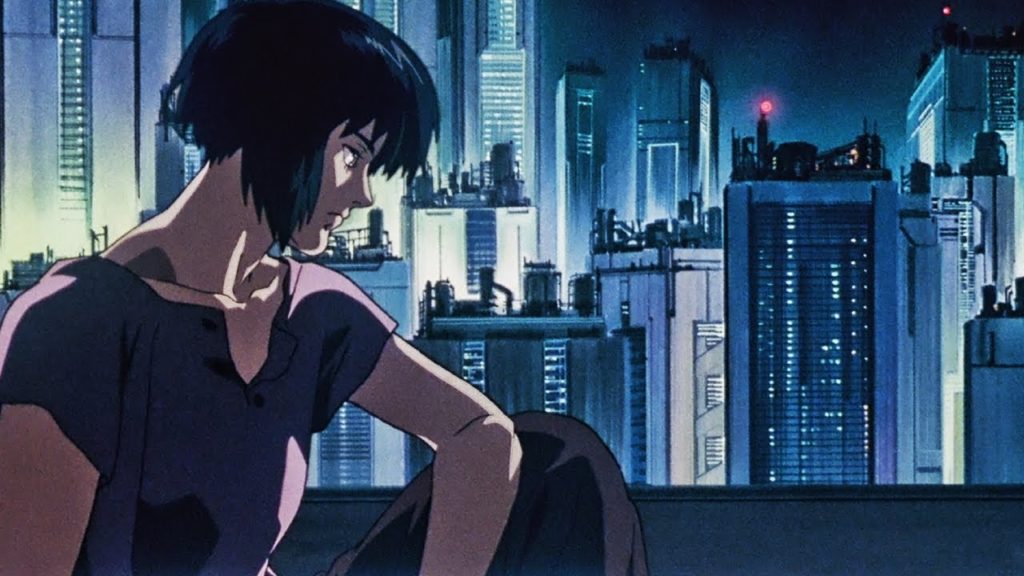
Major is key to understanding the intricacies of Ghost in the Shell. A cyborg agent, whose body is constructed solely by Megatech, one of the largest manufacturers of prosthetic bodies, robots and AIs in the world of the film. She, like many of her cybernetic counterparts, is gifted with a “ghost”: a consciousness that inhabits the “shell” – oftentimes referred to as a manufactured “soul”. It is through this “ghost” that The Puppet Master hacks into his victims, injecting them with false memories in order to achieve his goals.
Early on in the film, The Puppet Master ghost hacks a garbage collector, plaguing him with memories of a fake family. When the garbage collector finds out the truth about his family, and in turn The Puppet Master’s control over him, Major begins to doubt her own ghost. She has dreams – memories of a life before she became cybernetic – and spends hours scuba diving the pitch-black waters of New Port City only to resurface and “pretend” she’s someone else.

Major is tortured by existential dread. When “The Puppet Master” constructs a cybernetic body that Major claims, even while physically different, looks just like her, she determines to “dive” into the mind of the elusive hacker, in order to interrogate him and find out the truth of her being.
Ghost in the Shell is brimming with philosophical notions of identity, memory, and simulation. The “ghost hacking” is described as instilling a “simulation experience” that the victim can’t seem to shake free of, and when their eyes are finally opened, they see the world for the falsity it is.
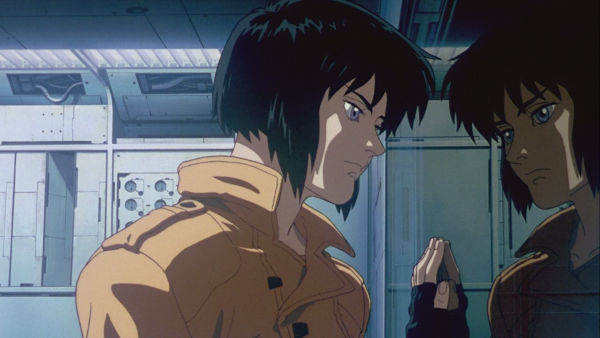
Years before the internet became second nature in society and decades before social media manifested itself as a world of false memory and personalised advertisement, Ghost in the Shell was there to warn us about the consequences of technological fruition. Through pensive dialogue and sea-deep themes, Shirow and Oshii expose the material nature of digital reality, the crux of living in a technologically-entwined society, and the ramifications of a sprawling online information system. Released four years before The Matrix (1999), it’s no wonder that the Wachowskis cite the anime as a major influence on their cyberpunk action franchise.

The Puppet Master describes the world’s vast network of information as a storage bank for memories; those which end up in the minds of cyborgs like Major. Much like Blade Runner (1982), Ghost in the Shell explores questions of identity and memory, taking the baton from replicants such as Roy Batty and Rachael, and suggesting that while a person’s body may be built or replaced with technological and artificial pieces, their consciousness – their soul – stays intact.

Ghost in the Shell foresaw so much and influenced so many. Cementing itself within the cyberpunk canon and proving that anime could be cool, complex and profound while delivering kickass action to boot.
The Music
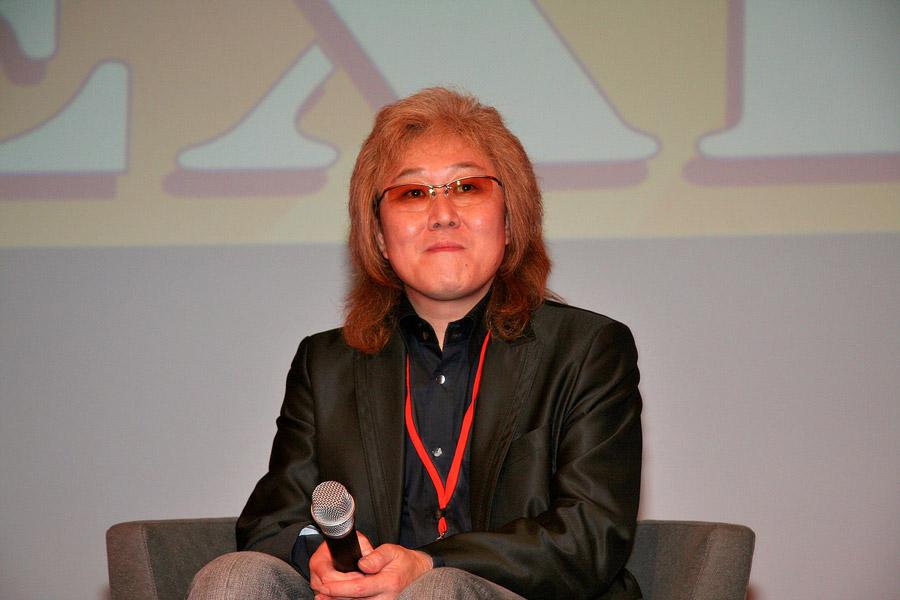
To describe the music of Ghost in the Shell to anyone who hasn’t already seen the film would be simple: it feels like a ghost is hunting your very soul. Utilising classical Japanese and traditional Japanese instruments for the film’s iconic opening chant, “M01 Chant I – Making of Cyborg”, composer Kenji Kawai establishes an echo chamber of harsh bells, creeping drums and distorted voices. Using a Bulgarian harmony in tandem with Japanese notes, the chant befits the cautionary elements of Oshii’s vision, evoking a sense of evil encroaching as we witness the creation of a cyborg.
Mamoru Oshii

One of the pioneering forces behind anime’s influx into the West, Mamoru Oshii had already shown his skill as a director before arriving at Ghost in the Shell, directing celebrated works such as Patlabor: The Movie (1989) and its sequel released in 1993.
After the success of Patlabor 2, Oshii originally wanted to use his industry clout to direct Jin-Roh: The Wolf Brigade, an adaptation of his manga, Kerberos Panzer Cop (1988 – 2000). However, after broaching the idea to Bandai Visual, the company asked him to direct a version of Shirow’s The Ghost in the Shell instead. And while Jin-Roh (1999) would end up being directed by Hiroyuki Okiura (with Oshii writing the screenplay) his decision to take on Bandai’s request proved fruitful, directing Ghost in the Shell to near-unanimous acclaim.
In the 1996 DVD extras of Ghost in the Shell, Oshii states that he intended to create something futuristic while pertaining to issues of the world at present:
“My intuition told me that this story about a futuristic world carried an immediate message for our present world. I am also interested in computers through my own personal experience with them. I had the same feeling about Patlabor and I thought it would be interesting to make a film that took place in the near future. There are only a few movies, even out of Hollywood, which clearly portray the influence and power of computers. I thought this theme would be more effectively conveyed through animation” (“Production Report”, Production I.G. 1996).
After the underground success of Katsuhiro Otomo’s Akira (1982), anime had begun finding its footing in America and Europe, introducing a generation of fans to the seemingly endless possibilities of the medium. Ghost in the Shell was to take Akira’s torch and run circles around every other anime in the international sphere, hitting the top of the US Billboard video charts in 1996, the first anime video ever to do so.

Distributed by Manga Entertainment, which was later bought out by anime giant Funimation, Ghost in the Shell put Oshii on the global cinematic map, cementing his auteur status and enticing new audiences to the expansive worlds of anime. He was later invited to the Cannes Film Festival in 2004, bringing the film’s sequel, Ghost in the Shell 2: Innocence (2004) with him, which had been nominated for the prestigious Palme d’Or prize.
Oshii’s style has resonated globally, utilising visuals to create stories and bringing in characters as the last hurdle. Angel’s Egg (1985) is a prime example of his image-based style, a minimalist anime about a girl who shelters a mysterious egg in an overtly symbolic wasteland.
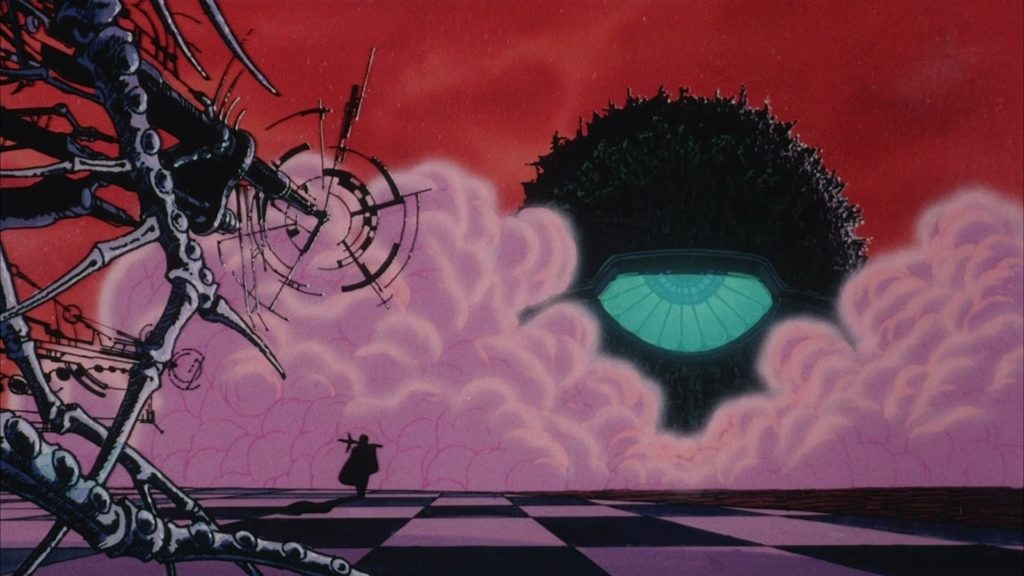
While occasionally breaking from animation to direct live-action works such as Assault Girls (2009) and StrayDog: Kerberos Panzer Cops (1991), the precursor to Jin-Roh, Oshii has continued to tell iconic stories in anime, as well as writing and illustrating many beloved mangas. His style has crossed many forms, with one of the more recurring images being that of a sorrowful basset hound, which the director himself has stated is inspired by his own dog, Gabriel.

25 Years Later…
Despite releasing over 25 years ago, Ghost in the Shell has remained at the forefront of anime output. It predicted the proliferation of technology and the increasing amounts of surveillance systems in society. It anticipated the escalation of the internet, exposing the cracks in our vast network of information before social media was even a thing. Oshii’s magnum opus stirred the appetite for “smart” anime in the West and influenced artists around the world to jump on board the cyberpunk train and create great works from the cyber-centralised smorgasbord of cool action and heady concepts.
Ghost in the Shell was and continues to be one of the greatest feats of anime mastery ever put to screen. And with BFI’s current anime season offering two screenings of the film alongside a selection of Oshii’s other works, now is the time to watch it all over again, loud and proud and brimming with prescient wisdom; wisdom which has since become a reality.








































